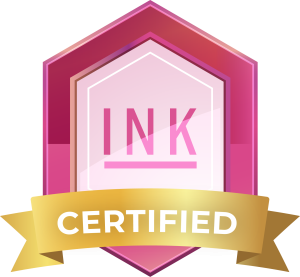
Table of Contents
CBD products meet cross-generational needs. Whether external or internal they offer benefits to a huge diversity of the population. Pain, trouble sleeping and stress are not demographic-based. Whether you’re in your 20s, 40s, or 60s, they are facts of life.
The trigger may vary, the problem is the same.
In your 20s, the post-exercise pain may be activity driven from over-doing at sports. By the time this same person reaches their 40s or 60s, arthritis triggered by years of athletics brings on a different pain that becomes more ongoing.
This is a great sweet spot. One product meets a huge diversity of needs. But simple psychographic marketing, “interest/need” based, doesn’t take into account different buying patterns of diverse demographics. Each generation tends to buy a little differently.
This becomes an interesting challenge for e-commerce stores. A successful business will need to use a psychographic approach to marketing. But they need to include techniques that accommodate the demographic diversity of buying patterns.
There has been a lot of attention focused on what is perceived to be the largest population group, the millennials (Gen Y). The philosophy goes, that if they are the largest group, they should be the one to focus your marketing on. But there are some fallacies to this train of thought.
While millennials have the largest numbers, the boomers have a significantly larger buying power and disposable income. Millennials may have money to spend…and I agree they are certainly spending. But the boomers had the money yesterday, they have it today, and they’ll have it tomorrow.
Age is only a number to boomers. Look at the Hollywood icons eligible to be AAA card carriers. Nobody things of Cher, Tom Cruise, George Clooney or Nicole Kidman as a senior sitting in a rocking chair. They are active and actively spending.
Did you know that according to a recent report by Total Retail only 10% of all marketing budgets are allocated to boomers? While 50% goes to marketing to millennials.
With over $500 billion spent annually, boomers outspend every other generation. Their purchases encompass over 50% of total use consumption.
There are those who would say “the boomer market is going to shrink.”
Not any time soon. They are forecast by Visa to continue to drive the US economy for the next 5 to 10 years. And in the next 14 years, they are forecast to inherit $14 Trillion dollars.
This at the same time that spending among younger consumers is expected to decline.
With their buying power, and the health/pain issues that seem to increase with age, boomers are a golden market for alternative health and CBD.
Let’s take a quick look at the differences in buying approaches between the demographic groups for clues on how to effectively reach each.
Often ignored, this group is the wealthiest of the generations. Their needs and buying patterns have evolved, but they are still actively buying.
Annually, this generation spends about $163 billion annually or just under four times what Gen Z spends.
The Silent Generation does use social media and emails. However, most prefer to get marketing materials via direct mail, postcards, newsletters or flyers.
They want clear, simple, straight forward information with no “beating around the bush.” Focus on their values – family, patriotism, community, and respect.
It is not uncommon for this group, especially those who are increasingly elderly, to rely on a son or daughter to make recommendations. They may have their offspring do the purchase for them or help them find a product they are interested in.
The boomers are busy…and busy spending. Annually they spend $548 billion and of that over $7 billion online.
They are stressed and looking for EASY. They want convenience first. Hours wandering shopping isn’t on their list of relaxing activities.
Because of their buying power they financially don’t have to find a bargain. Convenience over price wins.
A poor customer service experience will trigger them to abandon a purchase or change shopping venues. If you want to send them an email coupon – you’d better make sure the link works before you send it out. If you aren’t checking for this you risk losing them.
I am a boomer and the first time I got a “special code” that didn’t work when I tried to place the order, I went ahead and placed the order because I needed the product. The second time this happened…I went to a leading competitor. It felt like “bait and switch.”
Don’t send out a special before it’s time to activate it.
While some people tend to think boomers aren’t tech-savvy, that’s false. Sure, there are some people in every generation that hate technology. Most boomers have embraced it.
A whopping 85% research products online. And 66% regularly purchase online. They tend to prefer a laptop or desktop for ease of shopping.
Boomers are less influenced by social media. They are more apt to be attracted by the popularity of a brand when looking at a new product. They are best reached by a diversity of ad-media. An omnichannel approach tends to be the most effective.
Boomers are attracted by a strong online presence. Most have a Facebook page, but don’t depend on it for purchasing. If they see something interesting on Facebook, they are more apt to do an online search than follow the Facebook link.
The streaming style of Twitter and Instagram is less popular with this group.
Boomers like rewards. The most effective is a straightforward loyalty program. And they want it simple.
Give boomers simplicity, convenience, a loyalty program, and great customer service. Those are keys to their staying with you. It makes you the easy choice over spending more time researching and shopping at your competitors.
Gen X is sometimes erroneously combined with boomers. While quickly moving toward the age of 60, their buying patterns are different from their parents.
At this point, while they are only 25% of the population, they produce 31% of the US income. As their kids move out on their own, Gen X has disposable income and inclination to spend.
They are looking for honesty, transparency and clear product information. They expect marketing messages that point toward the buying path.
This group likes to research everything at home on their laptop or desktop before they start the purchasing process. But they aren’t the least intimidated by doing research on their smartphones.
The most effective way to reach Gen X is via email. Most are on social media, but they are more influenced by email marketing messages.
Your products need to be visible and accessible online with smart use of SEO.
Gen X tends to be more conservative shoppers than the other generations. They don’t trust you…and are more skeptical. Give them practicality and proof of performance. If they have doubts about performance, they are easily dissuaded.
This group is looking for unique, high-quality products.
Customer service is their key loyalty driver. While they aren’t big with online brand engagement, they are motivated by discounts. Personalized email specials, especially those that tie into previous purchases are likely to get a response.
Gen X is likely to interact with your customer service team and has high expectations of quality. They expect to learn the best options for their needs…without an upsell. They perceive the customer service members to also be consumers and their advocates, so rely on them for recommendations.
Gen Y, more commonly known as millennials are internet-focused. 33% of them rely on blogs to decide on a purchase. And eight out of ten won’t buy without reading reviews first. A full 90% always research online before they buy.
Less than 1% of millennials are influenced by traditional advertising. They depend on social selling, user-generated content, and word of mouth.
To attract and keep them loyal, authenticity is critical. This group is naturally suspicious of being lied to by brands. Pushy selling doesn’t work. They reject overbearing marketing tactics.
Like the Gen X group, they want honest, authentic interactions with customer service. They expect them to also be consumers of the product.
More than Gen X, millennials like to interact with your brand through social media. Twitter and Facebook are popular ways to get their thoughts out.
Your “cause” is much more important. Given two companies with similar products, the one who supports a cause will likely get 50% more purchases.
One commonality between Gen X and Y is that women in this group tend to be leaving the workforce. This will impact household buying power. Researchers feel this is likely to restrictive parental leave and the high cost of childcare.
A recent study shows that the overall labor workforce is growing slowly, but that participation is declining. There is expected to be a 5% drop by 2022.
At the same time, female boomers are staying in the workforce longer and their participation will increase to over 65% by 2022 – a 5% increase since 2012.
This group can’t remember a time before the internet. It is an integral part of their culture and buying process. They use Google and others to shop, compare, and analyze.
Because of the myriad of different laws regarding the sale of hemp products and age restrictions, businesses must move forward carefully. Currently, Gen Z ranges from age 9-21.
Some CBD bath and beauty products may have no restrictions, but other items can be very different. Your legal team can provide the best recommendations.
Gen Z likes to be heard and contribute to consumer-generated content. They also like to interact with brand representatives.
Gen Z likes to be encouraged to share photos and videos of their purchases. They like to participate in polls and contests on social media. It’s important to listen to them and respond to their feedback.
They are arguably the largest group of participants in online reviews. While they love the social side of shopping in stores, they are frustrated by the lack of interactive technology. Interactive technology drives their buying process.
A key factor for shopping in-store versus online is the instant gratification of not having to wait for the package to arrive. This is a key target group for ordering online with in-store pickup.
A challenge is making sure your business information is easily accessible to Gen Z across all the different devices they like to use.
While Gen Z currently has a spending power of $44 billion annually, this can be expected to rise as they get older and gain more income traction with work experience.
To best reach cross-generations who share a common interest or concern, you’ll gain more sales and repeat customers if you integrate techniques to meet each group’s buying habits.
All groups are concerned about honesty, integrity and amazing customer service. They all like businesses with a philanthropic side.
All generations value clearly stated information and product descriptions. All are skeptical of pushy sales.
Most generations appreciate a good sale…but they can be resistant if it is complicated or time-consuming to take advantage of.
In the CBD niche, the placement of information needs attention and consideration. You need to include educational, informational material that is not on the product page.
Separate product descriptions, from studies, testimonials or other material that could be flagged by the FDA as making a health claim. As laws clarify, this will become more simple.
Segmentation by how they flow through the buying process can be beneficial. Collecting data on their preferred way to get information can also be useful. Do they prefer email, social media interaction, or a postcard?
When I work with my clients we look for what can be included on their website that ticks a box for individual demographic buying patterns.
After they’ve made a purchase, we segment them by what they purchased and any identifiable triggers to best stay in touch and create repeat sales.
They all have pain. They all want product.
They all need their purchase driven by slightly different triggers. The more you can include and cater to this, the broader your customer base will be.
 Judith Culp Pearson receives three top honors
Judith Culp Pearson receives three top honors
at the annual Society of Permanent Cosmetic Professionals in
Ft. Worth, Texas - October 7-9, 2023




